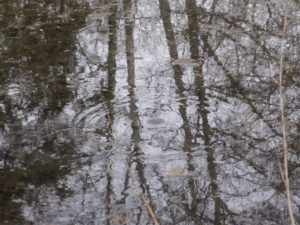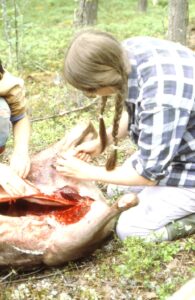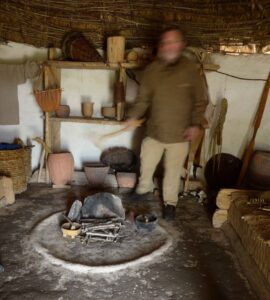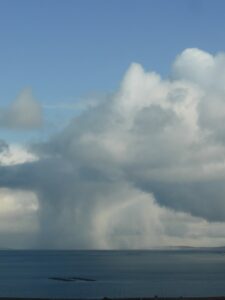
The other week I touched upon the altered awareness that I believe any Mesolithic archaeologist needs to develop. A sort of ‘Mindfulness of the Mesolithic’. This is not just a matter of physical surroundings. It extends to other elements of the way in which we locate ourselves in the world.
Today, we make clear divisions between the measurement of physical space: distance, and that of temporal space: time. But has it always been so? Barry Lopez introduced us to the idea that physical distance can also be perceived as time in his book Arctic Dreams. A journey is not just one of 100 km. It is also one of two days. For some societies this is how the world is understood. If you travel just a bit further it becomes more complex. My colleague Richard Clubley was discussing how you move back in time as you move north: when the daffodils are almost over in the south of England in early March, they will only be just emerging for those who live in the north of Scotland. You get the same effect over a shorter distance as you climb a hill: you might set out in the early morning sunshine of a spring day, only to move back in time to late winter snows as you reach the summit.
The rigid boundaries which we impose to make our world understandable can be fluid for those with a different view. A similar fluidity applies to community and landscape. The family, to us, is a fixed concept that operates within strict limits and boundaries. We may include several generations, and we have learnt to accept some who make short term absences, but in general, we live with the same group of people year round. The moment when we leave that group can be traumatic, sometimes played out over years as we re-stabilize into a new independence. Equally, most of us are accustomed to the same piece of landscape throughout the year. It may be small or large; in general, it rarely varies.
Life for the Mesolithic individual was different. We assume that family bonds were recognised, but we are by no means certain that people lived within the same group of individuals year round. At times the group may have split and recombined according to season and task; moving out across the landscape in order to make use of resources. These task-groups may have been based on age, gender, or relationship, or perhaps a subtle combination of all three. At other times outside factors such as a particularly harsh winter, an overly dry summer, or the impact of inundation, may have led to other divisions. In times such as these it is often easier to find food and other resources for smaller groups. Occasionally events such as a significant kill, or a whale stranding would bring people together in larger groups, groups that could be made use of to rekindle old ties and forge new relations.
This was the way of survival.
Today, we find security in the known. We are really very conservative. We like to know what to expect, who to greet, and where we will find food and shelter. We are highly rational beings; we have divided and counted and categorized and described our world into smaller and smaller (and bigger and bigger) units.
I don’t actually think that life for the Mesolithic family was any less ‘known’. But I do think that they knew in a different way. I think they were more comfortable to ‘go with the flow’. In a smaller community it was easier to know everyone, yet live with some; to understand the landscape, yet move across less visited areas; to perceive the passing of the sun as the scale of your journey. Like us, their lives were carefully controlled in order to ensure survival. Unlike us, their control contained the luxury of flexibility.



You must be logged in to post a comment.